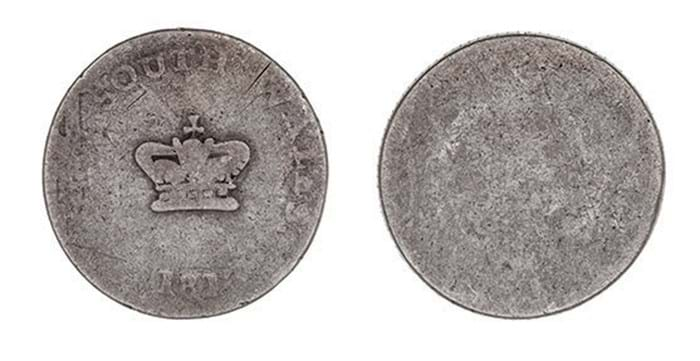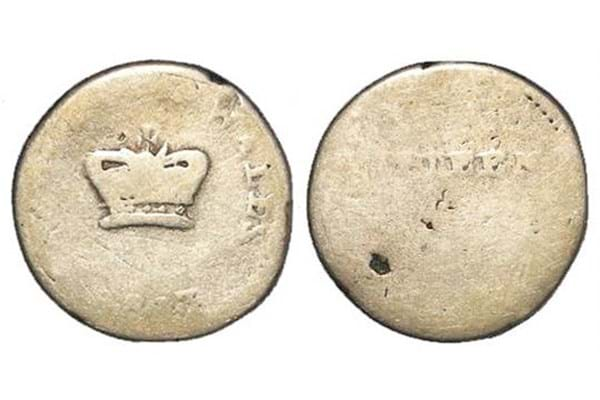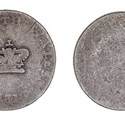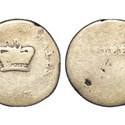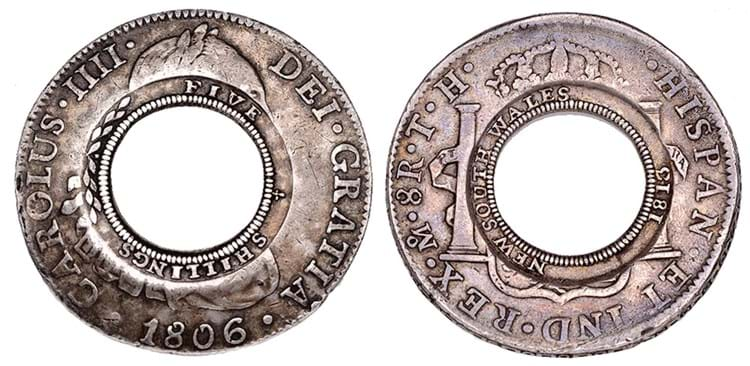
We are talking about one of the very first coins used Down Under, in the early days of the fledgling penal colony of New South Wales.
The latest Holey Dollar example to sell at auction came up at London saleroom Morton & Eden on June 15 estimated at £40,000-60,000.
David Kirk from the auction house said: “There was strong bidding at the sale, via the internet and also in the room, but in the end two phone bidders contested the final price of £82,000 hammer (plus 20% buyer’s premium).”
He added that since these coins are very rare, “there are only a certain number ‘known to the market’ and therefore available to buyers and collectors, with some held permanently by museums and institutions etc. When a newly discovered example comes along which was not previously known, and in this case with an excellent provenance to boot, there is always plenty of interest”.
Lack of money
In 1812 Lachlan Macquarie (NSW governor from 1810-21) bought 40,000 Spanish silver dollars struck at various Spanish mints to solve a currency shortage. Convicts were thought not to need money – no salary, after all – and soldiers were paid in promissory or paymaster notes.
However, 20 years into the colony’s existence, the need for an official money system became obvious. Macquarie himself had to pay for his house with 200 gallons of rum.
He enlisted the help of a convicted forger, William Henshall, to cut a hole in the centre of each silver dollar to prevent them leaving the colony.
The resulting ‘doughnut’ was then stamped with the words New South Wales, the value five shillings and the date 1813 to create Australia's first coin. The disc removed from the centre became known as the 1813 Colonial Dump, with a value of 15 pence.
Withdrawn from circulation in 1829, most Holey Dollars and Dumps were sold as bullion. Of those that survived the smelter, there are now believed to be only some 300 left, of which 200 are in private hands.
The backstory
The Holey Dollar sold at Morton & Eden, struck on an 1806 Charles IV eight reales (from Mexico City), did indeed have an intriguing provenance.
It was believed to have been acquired by Sir Gerald Strickland, 6th Count della Catena, 1st Baron Strickland of Sizergh, GCMG (1861-1940), probably during his tenure of office as Governor of New South Wales from 1913-17.
Born in Malta, Strickland inherited the title Count della Catena from his mother’s uncle and, following an eventful and sometimes controversial career in the Colonial Service, he became an influential politician in both the UK and in Malta, where he was reportedly loved and disliked in roughly equal measure.
Lord Strickland was also a coin collector who sold his ancient coins at Glendining’s on April 25-26, 1939. This Holey Dollar was recently rediscovered in the UK, is now offered by direct descent, and it is thought this example has not previously been recorded.
Holey Dollar results
In the UK, Morton & Eden last sold a Holey Dollar in the December 11, 2003, auction, which made £38,500 hammer (plus the then 15% buyer’s premium) against an estimate of £15,000-20,000.
A Holey Dollar sold at St James’s Auctions in February 2016 for £33,000 hammer (estimate £22,500-25,000).
Several Holey Dollars have emerged for sale in Australia recently. In April 2015 Melbourne coin dealer Coinworks sold a ‘Madrid Holey Dollar’ to a Queensland collector for Aus$550,000 (about £286,500 at the time). Only six of these particular types exist, originally struck at the Spanish Mint in Madrid. Five were in museums with this example the sole example in private hands.
According to the Coinworks website: “A further two Holey Dollar sales were finalised by Coinworks in 2014, one of which sold for $455,000 and was the highest price ever paid for a Holey Dollar created from a silver dollar minted at the Mexico Mint. The coin was in pristine, uncirculated quality and was the very finest Holey Dollar known.”
In March 2013 Coinworks sold a Holey Dollar for Aus$495,000 (about £334,500).
The bicentennial auction held by Spink in March 1988 offered 10 Holey Dollars for sale.
Coinworks managing director Belinda Downie said on the company’s website: “The Holey Dollar has always been acknowledged as one of Australia’s classic coin rarities. Its familiarity with the man in the street became even in stronger when Macquarie Bank in 1968 chose the Holey Dollar as its logo.
“Its standing as Australia’s first coin ensures it will always be in demand and never forgotten. It’s a coin that will never go out of fashion. It’s always popular, always recognised.”


